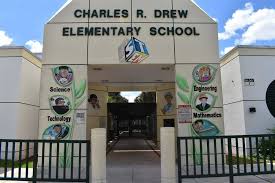New Oklahoma Science & Math Standards: Now Live on Progress Learning
In K-12 classrooms across Oklahoma, teachers and students are working with a brand-new set of standards for math and science. Known as the Oklahoma Academic Standards for Mathematics (OAS-M) and the Oklahoma Academic Standards (OAS) for Science, these are designed to ensure “Oklahoma students in every classroom receive current and relevant learning experiences that prepare them for college, career, and citizenry.”
At Progress Learning, we’re committed to staying ahead of these changes, and we’re thrilled to announce that these new standards are now fully integrated into our platform. This means teachers can now begin assigning lessons and creating assessments that are 100% aligned with Oklahoma Math and Science Standards.
Let’s walk through what these new standards are, what has changed, and how Progress Learning can support.
What Are the Oklahoma Math and Science Standards?
Every six years, the Oklahoma State Board of Education reviews existing instructional materials and textbooks to ensure they are relevant and high quality. As part of this process, the math and science standards recently underwent revisions. It was a collaborative effort involving Oklahoma educators, content specialists, and community members.
The OAS for Math and Science covers a wide range of subjects, including Pre-Algebra, Algebra I, Algebra II, Geometry, Precalculus, and K-7th grade math, as well as Physics, Chemistry, Biology, and 3rd-8th grade science.
What Are the Goals of the New Oklahoma Math Standards?
The 2022 Oklahoma Academic Standards for Mathematics are the result of contributions from mathematics educators and mathematicians across the state. They are designed to be “clear, comprehensive, coherent, and developmentally appropriate” and outline what students should know and be able to do by the end of the year. They are written and organized to allow for additional time for study and give educators the flexibility to teach them according to their schedules.
The OAS-M is organized into four main content strands: Numbers and Operations, Algebraic Reasoning and Algebra, Geometry and Measurement, and Data and Probability. These strands provide a foundation for teachers and help them guide their curriculum throughout the year.
The goal for these standards is for students to be able to “confidently and effectively use mathematics concepts, computation skills, and numbers to problem-solve, reason, and analyze information.” The standards aim to achieve this goal by following 4 guiding principles:
- That mathematics education requires equity
- That mathematics education should stimulate curiosity and create enjoyment
- That mathematics education should focus on problem-solving
- That technology is vital to mathematical learning
Read more about OAS Math here.
What Are the Goals of the New Oklahoma Science Standards?
Now let’s take a look at the Oklahoma Academic Standards for Science. Written and developed by science educators, community members, and representatives of higher education, these standards outline what students should know and be able to do at the end of the course or grade.
The main goal of these standards is to get students actively engaged in their learning. It’s not enough for them to read about science, they must also engage in scientific practices that scientists use each and every day. This is achieved by using the 3-dimensional performance expectations. These 3 dimensions permeate into all the Oklahoma science standards and include engaging in scientific and engineering principles, integrating disciplinary core ideas, and applying crosscutting concepts.
- Science and Engineering Practices: This is all about encouraging students to engage in scientific practices such as using models, carrying out scientific investigations, using mathematical thinking, and designing solutions.
- Disciplinary Core Ideas: These are the four science and engineering domains and are meant to be learned progressively over multiple grades. The four are physical science; life science; earth and space science; and engineering, technology, and applications of science.
- Crosscutting Concepts: These are the themes that span across all engineering and science domains. They include patterns; cause and effect; scale, proportion, and quantity; systems and system models; energy and matter; structure and function; and stability and change.
Read more about OAS Science here.
Progress Learning is 100% Aligned to OAS
As always, we’re dedicated to ensuring that our teachers and students are working with their latest state standards. We are constantly keeping track of new standards for each state and updating our platform accordingly.
This past summer, our product team worked tirelessly to integrate all the new Oklahoma math and science standards into Progress Learning. Now, teachers can begin creating assessments and assignments and generating bell ringers and other instructional resources that are 100% aligned to OAS Math and Science.
If you’re looking for additional support with these new standards, reach out to us for a free demo! We want to ensure you have everything you need to adapt to these new standards with ease.


